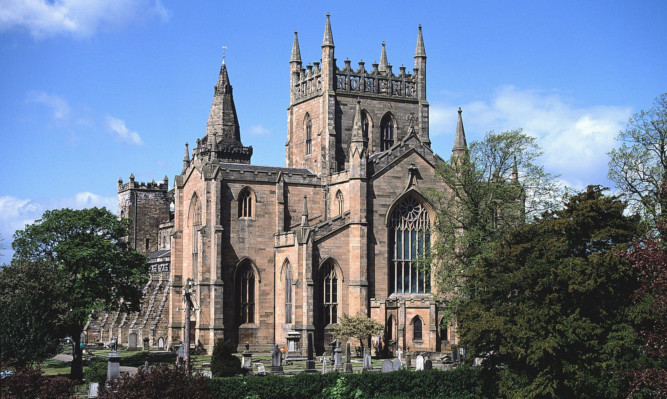A Fife historian has warned tourists are missing out on one of Scotland’s most significant sights because it lacks the proper signs.
Dunfermline Abbey the resting place of Robert the Bruce, as well as up to 25 other kings and queens of Scotland is often known as little Westminster due to its historical significance.
But Sheila Pitcairn, a tour guide for 30 years, says tourists are missing out because not enough has been done to inspire interest in the site.
She has called for plaques to be erected to mark the resting places of Scots kings and queens, including King Malcolm III, who makes an appearance in Shakespeare’s Macbeth.
Mrs Pitcairn, 81, is looking to raise the funds to bring the historic site to life for visitors.
She said: “It’s not fair that the people of Scotland do not know that all these royals are lying under the floor in Dunfermline, there in Dunfermline Abbey.
“The only marker is for Robert the Bruce but we need brass plaques for all of them.”
Around 30,000 people visit the abbey every year, while Westminster Abbey draws more than one million visitors annually.
Of the origins of her quest, she added: “It was when such a fuss was made about the bones of Richard III being found in a car park. Everyone knew about that and there were plaques put up where he was reburied earlier this year. It made me realise how little information there is to tell people about what we have here in Dunfermline.”
A Historic Scotland spokesman said a new guidebook for the abbey founded in 1128 will be published in 2016.
“Dunfermline Abbey and Palace is an important heritage attraction that sits within our portfolio of properties in care across the country,” he said.
“As part of our efforts to enhance a great visitor experience, we installed a series of new interpretation panels at Dunfermline this year, to help communicate and engage visitors with the abbey’s fascinating history and story.”
